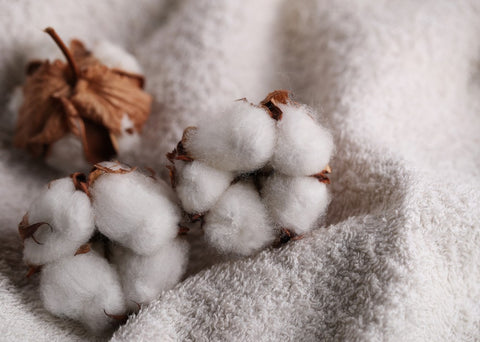
Sustainable Fashion: The Cuteez Story
Share
In this blog we take you into the world of sustainable baby and children's clothing. We have put a lot of thought into creating new collections and would like to show you how we make the trendy and sustainable clothing you are looking for!
Last year we built our collection by reusing fabrics and using surplus fabrics, a brilliant idea with which we designed our collection in a sustainable way. But to be honest, it is quite difficult to create a larger and trendy collection with this approach due to the limited supply of trendy 'deadstock' fabrics. That is why we have devised a new approach especially for you to maintain the sustainable character of our collection. Read more about it here!

At Cuteez we base ourselves on three important pillars of sustainability: people, planet and affordability ('people', 'planet' and 'profit'). In my blog from June '23 I explained more about 'people' and why we choose handmade clothing instead of fast fashion and the exploitation of workers in low-wage countries. In this blog I will tell you more about the pillars 'planet' and 'affordability' and how our choices fit what you are looking for!
When it comes to the planet, there is often debate about natural versus synthetic materials. Synthetic fabrics are generally seen as worse for the environment because they are made from non-renewable fossil fuels such as petroleum. Although natural fabrics such as cotton, bamboo and linen are considered more environmentally friendly, they also come with challenges such as high water consumption, soil depletion and the use of pesticides and strong chemicals ( read more about bamboo here ). A dress made of 100% cotton is therefore not automatically better for the environment.
Fortunately, there are great alternatives these days, such as beautiful organic cotton, organic linen, recycled muslin and tencell! Quality marks such as GOTS (Global Organic Textile Standard), Fairtrade Cotton and BCI (Better Cotton Initiative) guarantee that these fabrics have been produced with respect for the planet. This seems to be the best choice: it is nice and breathable, feels comfortable on the skin and has only a limited ecological effect  footprint.
footprint.
For example, a dress made of 100% cotton fades faster than a dress made of cotton and polyester. And a blouse made of 100% linen wrinkles terribly; a difficult property of the fabric that you can reduce by mixing linen with viscose. Synthetic fibers also provide stability to the fabric, allowing a natural fabric to retain its shape longer. These are important properties that determine how long a garment lasts and how much enjoyment you get from it. At Cuteez we take this into account when we talk about sustainability.
Affordability is also something to think about. Organic cotton, linen or tencell are expensive and rare fabrics. Currently, less than 1% of all cotton is organic and certified, meaning the price is high. And the bamboo that is extracted in an environmentally friendly way is only a very small percentage of the total bamboo textiles. At Cuteez we focus on an average audience and we want everyone to be able to purchase responsible fashion.
At Cuteez we therefore make smart choices. Our goal is to offer affordable and responsible clothing that lasts a long time. Clothes that you can pass on to nephews, nieces, sisters or brothers. Your investment must be worth it!
And how do we do that?
- We select high-quality fabrics with at least 50% natural fibers. This way you can be sure that the fabric breathes well, is comfortable and feels soft on the skin.
- We choose fabrics with a small percentage of synthetic fibers, but only if this benefits the durability of the garment, for example by improving color fastness or shape retention. This way the clothes will look beautiful for as long as possible!
- We select fabrics with a maximum of 5 to 6 percent elastane/lycra to add the necessary stretch without overloading the planet.
- Where possible, without making prices prohibitive, we choose organic or recycled fabrics, fabric mixes, lyocell/tencel or other fabrics with the above-mentioned certificates. This concerns a small part of the collection, because prices are currently generally too high and the range of beautiful prints is too limited. We are not (yet) fully focusing on this most expensive segment.
- We produce handmade, avoid exploitation and ensure good processing and finishing of the garment to extend its lifespan.
- All our fabrics have the OEKOTEX mark, which means that no harmful substances are present.

Love,
Wieke from Cuteez
